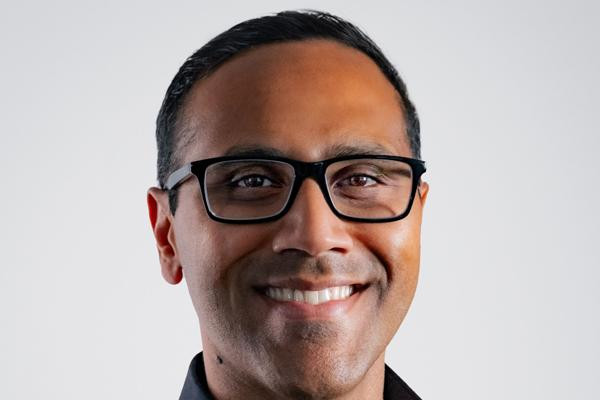Kinetic Automation’s new Northern California hub with Chilton Auto Body sets a new wheel spinning in the Southern California-based company’s “hub-and-spoke” plans for major metro areas in the U.S., while laying out possible future routes for the “ADAS and ADAS-adjacent” post-repair calibration start-up.
That’s Kinetic cofounder and CEO Nikhil Naikal’s shorthand descriptor — call it an elevator pitch for a three-story building. The details are generally guessable and the specifics get interesting, perhaps compelling.
The focus means “everything can be calibrated” after main repairs are complete. ADAS-adjacent, for Kinetic, includes things like “the steering column, airbags, head lamps—ADAS and safety,” Naikal said.
Kinetic seeks sites in big cities, ideally with an MSO anchor to scale fast on volume: cars needing post-repair calibration. Naikal said Kinetic looks for “the top 30 cities, then secondary markets” that commonly have ADAS- and electric vehicles both newer and plentiful.
Naikal said they’ve been adding sites at about one per quarter, now heading to about double that. “We want to do one a month, then one a week, over the next 24 months,” he said. Kinetic has the supply chain it needs, he added, “and a massive warehouse” in Southern California to support the work.
So far it’s opened six sites: three in southern California—San Bernardino, Temecula and Santa Ana—the new one in the Bay area, in San Carlos; and Salt Lake City, UT, and Las Vegas, NV.
 Kinetic Automation CEO Nikhil Naikal.
Kinetic Automation CEO Nikhil Naikal.
It would also consider a second hub in a current market. Kinetic had a second MSO partner in a different but nearby market to Chilton’s in San Carlos, but an area with “less of a latent market,” Naikal said.
“We’re still going to do it, about three months from now,” he added, “but we did the other one first.”
Loving It When a Plan Comes Together
Kinetic goes large on unique selling propositions with four: revenue sharing, speed, pick-up and drop-off, and no expense for collision centers to build-out ADAS centers of their own. The middle pledges speak efficiency; the first and last talk money—making them among the biggest on a shop owner’s mind.
Collision centers and dealers are often short on space for dedicated ADAS calibration; it’s arguably easier and faster to outsource the work anyway. In Utah, for instance, Kinetic links with Young Automotive Group. There are exceptions. Drew Bryant in Florida plans a separate ADAS operation available to local shops in a building behind his new digs, and Better Collision Centers folded EV work into its existing network.
“Larger MSOs want standardization,” Naikal said. “They maximize EBITDA when throughput is high,” which produces a better bang for the buck than, say, a paint discount.
Volume is also “a scorecard insurance carriers use” and Kinetic tends to work mainly with DRP shops. At least two insurance companies, Liberty Mutual and Allstate, have invested in Kinetic through their venture arms, the funding website Crunchbase said.
Kinetic doesn’t look so much at the number of shops—a “false metric” Naikal said, given “states like Texas—a massive box—versus a city like Boston, a much smaller one,” looking instead at the number of cars per shop or MSO that require ADAS work, and “how much repair time our services add.”
Ultimately, “the metrics are the same” for all owners. “Nobody likes downtime.”
Where to Next, Geography and Technology
Hubs are 5,000 to 10,000 square feet, “depending on the market,” Naikal said. Never below the former; San Francisco is the latter. No ground-up building: the company takes industrially zoned warehouse space. “The permits are easy because it’s not engine work, it’s digital.” Two techs can run the whole show, to start. Along with the robots, of course.
Kinetic is in a couple western states, looking to, in a macro sense, “hub-and-spoke” it from its California base. So does Seattle or Denver look good, given the EV sales rates in Washington and Colorado? Maybe Chicagoland for the chance to work with futurist operators like John Melendez. Naikal mentioned Texas.
Currently it “does no intake at all,” but over a longer term that could change. Or maybe something related to EV battery recycling—about to be mandated in California—where an urban hub could take a role in what looks to be a new eco-subsystem of mineral extraction and energy repurposing.
“I love the proliferation of companies” in AI-based pre-scans, Naikal said. “To have hubs adds value for many use cases over time, a canvas on which we can paint a product.”
This sort of thinking is well down the line, of course, but it’s the same vision that launched Kinetic in 2021.
It raised $10 million in Series A in October 2023, and $21 million last June, Crunchbase said. Investors across both include Menlo Ventures, Lux Capital, Construct Capital and Haystack Ventures, along with the insurers.
Crunchbase gives better-than-even odds Kinetic will get more money and eventually be acquired.













Paul Hughes